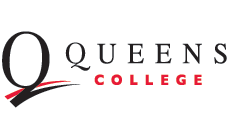
Publications and Research
Document Type
Article
Publication Date
2021
Abstract
Hydroelectricity provides 6% of U.S. electrical power needs, but hydro-dams also cause environmental harm, including the retardation or complete blockage of spawning runs of anadromous fishes. To facilitate fish movements, engineered-fishways have long been used but many have performed poorly. Dam-removal is the most effective way of restoring dwindling migratory fish populations by allowing unrestricted pathways to their spawning areas and for the downstream migrations of post-spawning adults and juveniles. However, removals of hydro-dams result in a loss of electricity production. For the replacement of energy foregone from hydro-dam removals, various alternative energy installations are now feasible. We present one-to-one conceptual replacement of hydropower with photovoltaic outputs for large and small river systems in Maine. We estimate that the equivalent land area needed to replace the dams with PV panels in the Kennebec River watershed—producing an annual mean±(SE) of 1101.7±37.9GWh—is 950.7±32.8ha, which is equivalent to 22% of the existing reservoir area. For the Mousam River, three hydro-dams dams could be replaced with 0.38 ha of PV. Our results indicate that modest land areas are needed to replace hydroelectricity with PV from even heavily dammed rivers, providing a realistic and potentially highly effective conservation policy option for Maine and for elsewhere.
Included in
Aquaculture and Fisheries Commons, Hydrology Commons, Natural Resources and Conservation Commons, Natural Resources Management and Policy Commons

Comments
This is the peer reviewed version of the following article: Sharma, Shailesh and John Waldman. "Potential Solar Replacement of Hydroelectricity to Reopen Rivers: Maine as a Case Example," Fisheries Magazine, vol. 46, no. 8, 2022, pp. 383-390, which has been published in final form at https://doi.org/10.1002/fsh.10619. This article may be used for non-commercial purposes in accordance with Wiley Terms and Conditions for Use of Self-Archived Versions. This article may not be enhanced, enriched or otherwise transformed into a derivative work, without express permission from Wiley or by statutory rights under applicable legislation. Copyright notices must not be removed, obscured or modified. The article must be linked to Wiley’s version of record on Wiley Online Library and any embedding, framing or otherwise making available the article or pages thereof by third parties from platforms, services and websites other than Wiley Online Library must be prohibited.